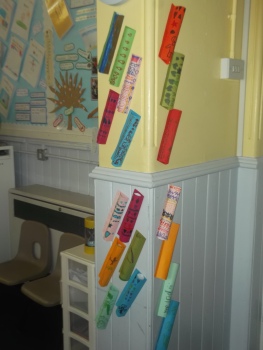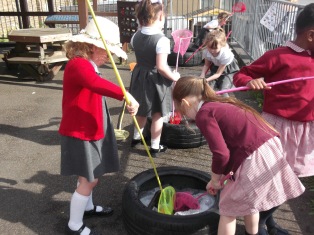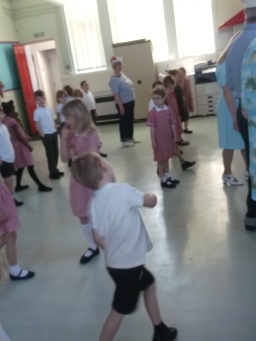In English we have been following instructions on how to make musical instruments.
Instructions have some different features that we talked about first.
- title or heading so you know what the instructions are for
- sub-titles to break the instructions down into the main parts
- bossy verbs that tell us what to do
- short sentences that are to the point
- diagram or photograph to see what the finished product should look like
We made straw flutes, a box strummer and a banging tin lid mobile.







We continued the musical theme in science. We spoke about how sound can be made by banging, plucking or blowing and how the sound moves through the air because of vibrations. We watched sparkles vibrating on a drum skin as we banged it. The noise source makes the air particles bang into each other and this is vibration. We used our bodies to show what happens when particles bang into each other.


Next we worked in pairs to make cup telephones that use vibrations to send the sound down the string. One of us spoke loudly into one cup whilst the other one listened at the other end.






In maths we are thinking about place value up to 100. We have to remember that the digits in a two-digit number have a different value depending on whether they are in the tens or ones column. We picked a two digit number and then made the number using tens and ones resources. We found the number on the 100 ladder and put a circle around it then we counted on and back from that number in ones.
























































































































